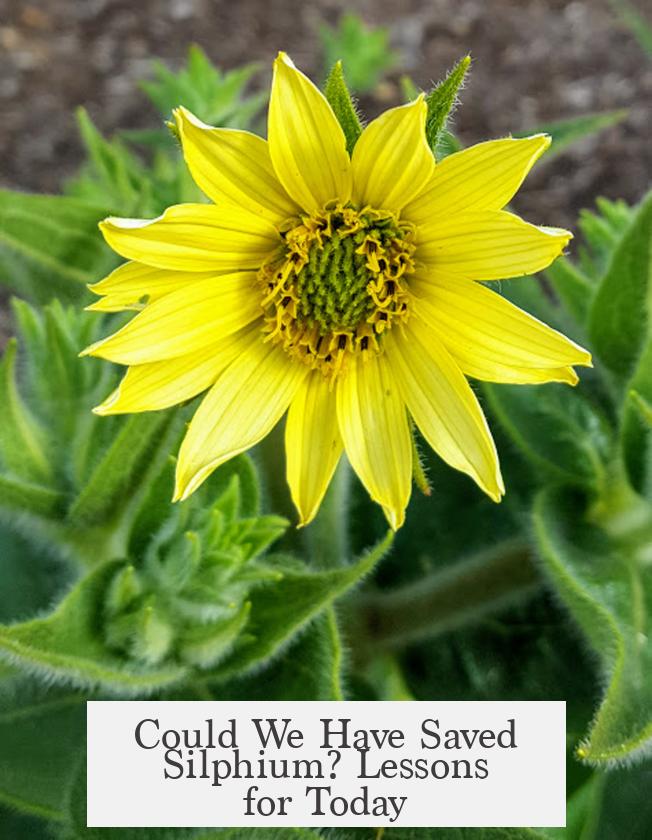Silphium was a plant exclusive to Cyrene, vital to its economy and culture, but it became extinct soon after the Romans took control of the region. The plant’s extinction is largely attributed to overexploitation by the Romans, who harvested it extensively in a few decades, as documented by Pliny the Elder. He recounts that while vast reserves of silphium’s processed juice existed in Rome during Julius Caesar’s era, by Pliny’s time, obtaining it was nearly impossible. An isolated specimen was reportedly sent to the emperor, underlining how rare the plant had become.
Cyrene was the sole natural habitat for silphium. It was so significant that it appeared as a symbol on Cyrenaic coins. This geographical restriction made silphium especially vulnerable to overharvesting. The Romans’ high demand likely outpaced the plant’s ability to regenerate, leading to its swift disappearance.
Regarding storage and trade, silphium was not transported as fresh plants but as a processed resin or juice. Ancient accounts describe how this resin was collected and industrially processed for preservation and commerce. This product was a valuable commodity in Roman markets.
Ancient texts refer to silphium’s medicinal uses, but they do not describe it as a miraculous cure. It was valued but would not have been considered a universal remedy. Instead, its use was probably more routine within the scope of herbal medicines known at the time.
| Aspect | Details |
|---|---|
| Geographic Origin | Only grew in Cyrene (modern Libya) |
| Economic Importance | Key to Cyrenaic economy and culture; symbol on coins |
| Extinction Cause | Overharvesting by Romans in the 1st century BCE |
| Storage & Trade | Processed juice/resin preserved and traded, not live plants |
| Medicinal Use | Used medically but not regarded as a miracle drug |
- Silphium’s extinction is mainly due to intense Roman exploitation.
- It was unique to Cyrene, making it vulnerable to overharvest.
- Romans stored and traded its processed resin, not the plant itself.
- Ancient sources recognize medicinal uses, without claiming cures.
What Do We Actually Know About Silphium, and Did People Really Drive It to Extinction?

If you’ve never heard of silphium, you’re not alone. It’s that legendary ancient plant wrapped in mystery, once so prized it was worth its weight in gold. People rave about it—some say it was a miracle medicine, others hint at culinary magic. But here’s the catch: silphium is gone. Extinct. Vanished like a ghost from history. So, what do we really know about it? And did humans doom it by greed? Buckle up. This story is both fascinating and a little cautionary.
A Crop of Kings: The Rise and Fall of Silphium
Silphium’s story begins in a very specific spot: Cyrene. This ancient city, located in what’s now Libya, was the only place on Earth where silphium naturally grew. Imagine a plant so iconic it earns a spot on your city’s coin. That’s exactly what happened—silphium was the pride of Cyrene’s economy and culture. It wasn’t just a plant; it was a symbol of prosperity and power.
The Romans, ever admirers of useful plants, swooped in as Cyrene fell under their control. But here’s where things take a grim turn. According to Pliny the Elder, a Roman naturalist writing in the first century CE, massive quantities of silphium were stockpiled in Rome during Julius Caesar’s time. But these stockpiles weren’t fresh plants. Nope. They were the processed juice of silphium, preserved for trade and use.
Think about it: no seeds, no cultivation, just liquid gold stored and traded. Pliny even recounts the sad tale of a single silphium plant discovered and sent to Emperor Nero. That’s a precious, desperate find signaling the end was near. Clearly, the Romans’ exploitation geared toward consumption and storage, not conservation.
So, Did the Romans Drive Silphium to Extinction?
Yes, it looks that way. Silphium appears to have disappeared soon after Rome’s takeover of Cyrene. The timeline is tight—decades, not centuries. The problem? It only grew in one place. No backups, no second opinion. The Romans overharvested, and the plant just couldn’t keep up.
This is a notorious example of what today we’d call overexploitation or resource mismanagement. The fact that Cyrene’s coin showed silphium hints at its economic backbone role. When a crop that crucial vanishes, entire communities feel the hit. Rome’s insatiable appetite for silphium’s juice—used medicinally and possibly as a seasoning—burned through the natural reserves fast.
So, yes, humans really did play a direct role in driving silphium to extinction. That’s one for the history books and environmental lessons.
What Exactly Did Silphium Do? Not a Magic Bullet, But Pretty Useful
Now, let’s bust a popular myth. Silphium wasn’t some “miracle drug” that cures all maladies. Ancient sources don’t call it that. Instead, they describe it as a plant with several medicinal uses.
Think of silphium like a multi-tool in your kitchen drawer. It had value but wasn’t a cure-all potion. Some say it helped with digestion, others hint at contraceptive properties. The ancient world prized it, sure, but they weren’t expecting a magic wand.
The fact that Rome processed silphium juice industrially suggests a high demand for its medicinal and culinary benefits. The storage technique preserved its potency for trade, but that industrial-scale use hastened depletion. Talk about a supply and demand problem gone wild.
Could We Have Saved Silphium? Lessons for Today

Imagine if ancient farmers had the know-how and patience to cultivate silphium outside Cyrene. Would that have saved it? Sadly, no clear evidence shows successful cultivation attempts.
They relied on wild harvests, leaving silphium vulnerable. Once Rome’s greed kicked in, the plant stood no chance. This mirrors many modern species’ fates—think overfished cod or overharvested timber.
We can learn from silphium’s extinction. Sustainable harvesting isn’t just a buzzword. It’s vital for preserving resources. Even plants with huge value need care and cultivation strategies to survive.
Wrapping Up the Mystique of Silphium
To answer the main question: We know that silphium was a unique plant growing only in Cyrene, essential to its economy, and highly valued by ancient civilizations. But its extinction seems to be a direct result of intense overharvesting by the Romans after they took control. Stockpiles in Rome were juice, not living plants, highlighting a lack of regeneration effort. Despite its medicinal use, silphium wasn’t a miracle drug but a useful resource with economic and cultural significance.
History’s lesson? Natural treasures like silphium vanish fast when humans treat them as mere commodities. So next time you enjoy a spice or herbal remedy, spare a thought for silphium—the ancient plant lost to excess and fame.
Intrigued to learn more about lost plants and ancient botany? It’s a fascinating world that intertwines history, economics, and ecology all in one.




